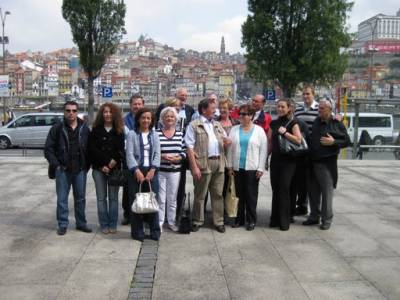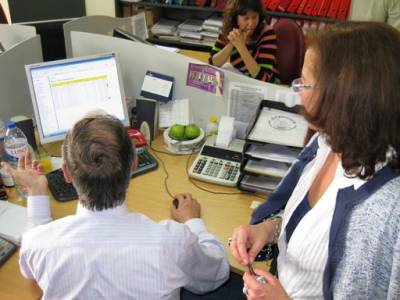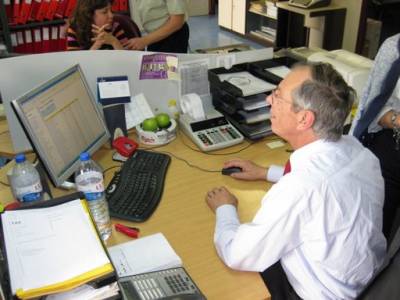European Customs: Evolution or Revolution?
New Security Amendment from July 1st 2009
The Chairman of the Working Group Customs Mr Peter de Haas jr, from
the Dutch Ship Suppliers Association (NVvS - www.nvvs-online.nl), the
son of Pieter de Haas, analyses the legal and IT changes in the EU
and points to the consequences for European Shipsupply.
As the EU Commission likes to point out, since July 1st, 2009, the so-called 'Safety and Security Amendment‘ of the EU's Customs Code has entered into force, requiring ship suppliers to provide their local customs authorities with electronic information on the goods they supply to the vessel, 15 minutes prior to delivering them. In these 15 minutes, the powerful computer systems of your customs office will perform truly magical tasks – it will not only assess how dangerous you are, but also how risky the goods are, that you hope to supply to the vessel. What you can do to allow customs officials to sleep soundly at night, is to become an Authorised Economic Operator (AEO), because then you can be considered as reliable and trustworthy! This might also prevent the customs computer systems from over-heating when creating your risk score each time you supply! Might the high costs, the time commitment involved and the relatively little benefits to meet the multiple criteria to become an AEO, have anything to do with its current unpopularity amongst the trade community? And what happens when we are all AEOs? Who gets preferential treatment then? Who gets to go through the green lane first?
When supplying the pre-information, customs will not mind, if you send them your full customs declaration straight away or the invented “Exit summary declaration”, in EU speak called an "EXS", as long as you do it electronically – meaning that the days of paper declarations are over once and for all! Take a last look at your customs stamp, as it will soon disappear. I just hope that your local customs office is as modern as the EU is ambitious and accepts this pre-information electronically, runs the risk analysis and communicates the results not only to you as well as the customs office where your vessels to be supplied is docked, no matter if you are in Porto delivering to a vessel in Tallinn! By the way, don’t forget that whilst the submission of EXS is not mandatory until 2011, your additional security data (a special list for shipsupply exists) needs to be included in your full electronic customs declaration, meaning that the so-called and much celebrated “transitional period” does not help ship suppliers at all. Nonetheless, I recommend making bold use of the possibility to use the 3 CN-Codes for shipsupply in your operations. They are not just trade facilitation for us – using them is in fact the only way to run our specialised business in this electronic environment.
Please note that one of the most significant changes in European legislation for shipsupply relates to the new arrangements for “alternative proof”. I advise you to study the new provisions carefully and discuss with your local or national customs, which alternative proofs are acceptable. Also if you are not receiving the so-called “exit results” message in your computer system, although your goods have long been eaten up or are running the engine of the vessel on the high sea, then you should ask your local customs office, to certify the exit, showing them something like the loading list or the invoice signed by the captain of the vessel as alternative proof (remember - no more stamps!). You can do this on your own initiative already on the working day following the supply since customs are legally required to send the exit confirmation message on the day after the goods have left the community. After asking the customs office where the goods have left, your local customs office can close the operation in their computer system. Since all of this is highly complicated and you almost need to hire a consultant, just to understand all these new processes, the European Commission created a support toolbox. It consists of e-learning courses for AEO and EORI, a general mini website on the security amendment and guidelines for the exit procedure with case studies and a Q&A section. It can be found on the Website of DG TAXUD:
http://ec.europa.eu/taxation_customs/customs/security_amendment
/general_overview/index_en.htm
Now it is for you to judge if the changes I described constitute a “revolution” or simply an “evolution”? In OCEAN we will try our utmost to support you with the change over from paper to IT. Please report to us any problems you might encounter across the EU. It will help us to assist the Commission in creating better legislation. If you are interested in joining the OCEAN Working Group on customs, please get in touch with your national association. The only thing left to say is: "Good luck!"




